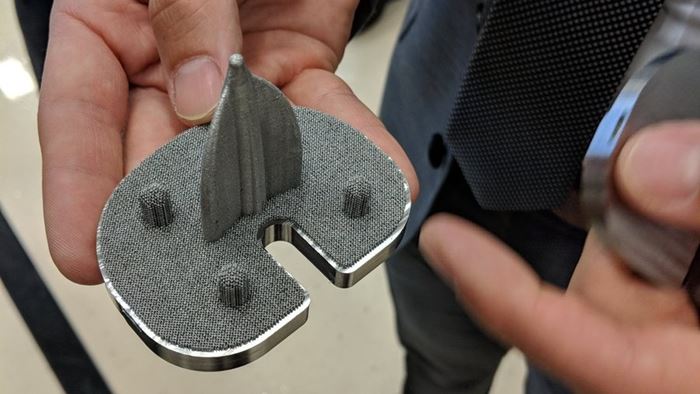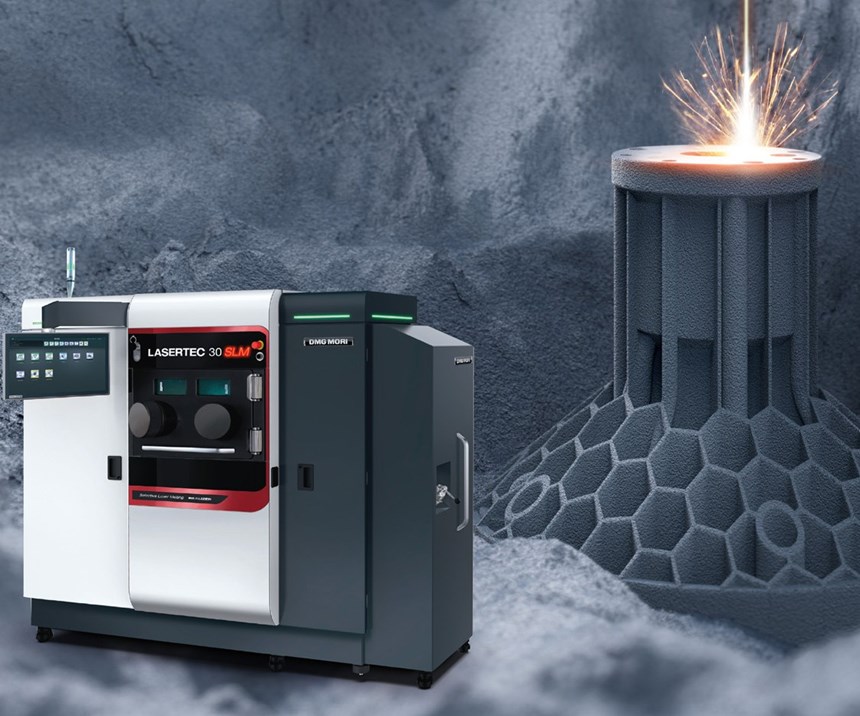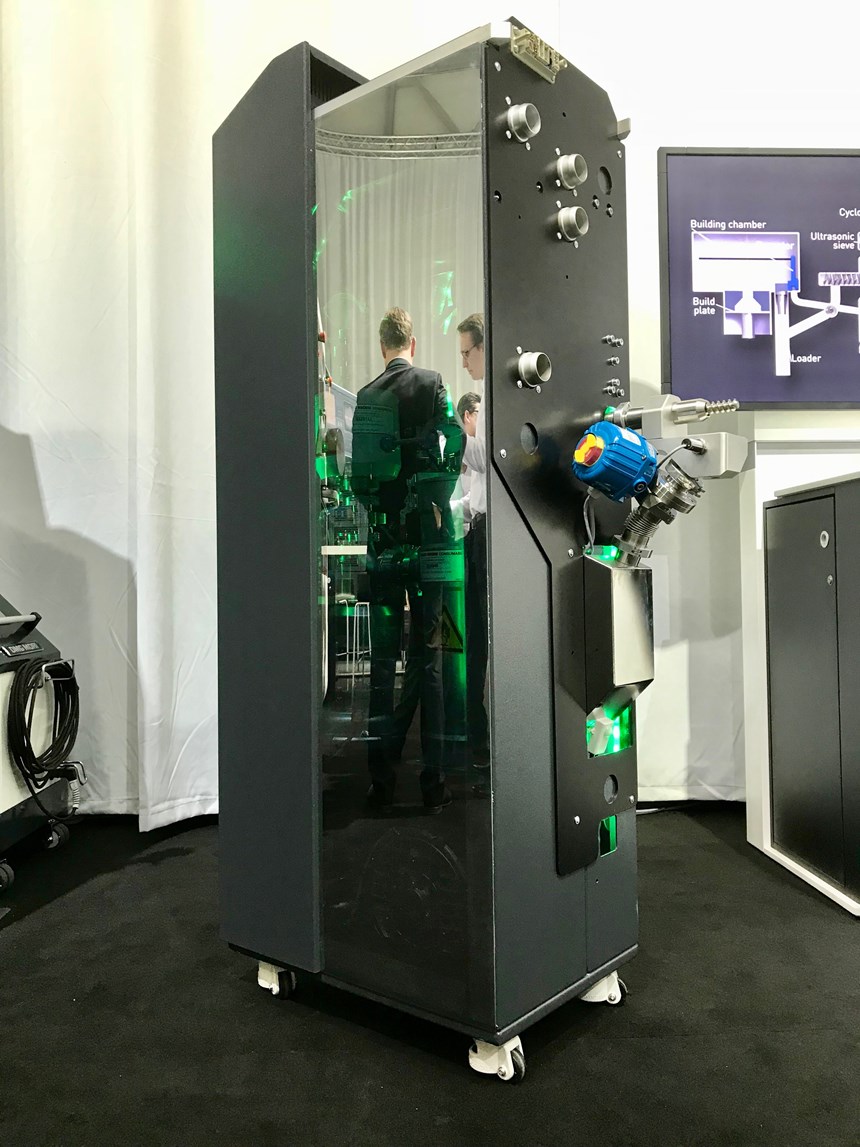DMG MORI Powder Bed Machine Sees North American Release
DMG MORI's Lasertec 30 SLM uses a modular powder bed to enable fast material changes between or even during the build.
Share
DMG MORI’s first purely additive machine, the Lasertec 30 SLM, recently debuted at the company’s 2018 Innovation Days in Chicago. The selective laser melting (SLM) machine is the first product to come out of the company’s acquisition of German additive manufacturing (AM) company Realizer, and it provides a flexible, economical approach to manufacturing large numbers of parts, including those incorporating multiple materials.
The machine’s principal feature is its detachable powder module, which enables the easy changing of materials without the need for lengthy cleaning. The module reduces the material change-over time to less than two hours, and powders can be swapped both during and between builds, enabling the production of parts with multiple materials. Taking advantage of this quick-change module, the machine can use an array of materials that includes aluminum, titanium, tool steel, cobalt-chrome and Inconel.
According to the company, even with the release of its first stand-alone powder-bed machine, DMG MORI views additive manufacturing as a complement to traditional production methods. AM processes can supplement and improve upon traditional machining operations, and to demonstrate this the company showed parts produced with a combination of machining and additive manufacturing at its Innovation Days event. One example was a tibial plateau replacement, the knee prosthesis pictured above. The device consists of a machined base plate with 3D-printed features. Machining the base enables faster production and provides a smooth surface where the replacement meets the joint, while the additive process provides light, sturdy lattice structures that encourage bone-tissue in growth more readily than a solid machined piece can.
To accomplish a hybrid workflow, machined workpieces can be loaded into a carrier plate with precision-fit pockets machined into it, which is then loaded into the printer. Object locations are defined through the Celos SLM software. To support 3D printing, workpieces must be machined from a material that is the same or compatible with the metal powder in the printer, as the laser-melting process will damage a workpiece if its melting point is lower than that of the powder. Further, it must have a planar starting surface on which to build.
The company sees its SLM machine as an important addition to its additive offerings, which includes the Lasertec 3D hybrid five-axis machine center. “Both manufacturing technologies complement each other ideally in our product range,” says Patrick Diederich of the companies Advanced Technologies division. While the former can 3D print large numbers of small parts using different materials, the latter can produce and finish larger parts in a single setup. Both are intended to provide production-level additive technology that traditional machine shops can integrate into their offerings.
Related Content
-
3D Printing Molds With Metal Paste: The Mantle Process Explained (Video)
Metal paste is the starting point for a process using 3D printing, CNC shaping and sintering to deliver precise H13 or P20 steel tooling for plastics injection molding. Peter Zelinski talks through the steps of the process in this video filmed with Mantle equipment.
-
What is Powder Bed Fusion 3D Printing?
Whether in metal or polymer, with a laser or an electron beam, powder bed fusion (PBF) is one of the most widely used 3D printing techniques.
-
AM 101: What is Ultrasonic Additive Manufacturing?
Going from additive to subtractive can be simple with Ultrasonic Additive Manufacturing (UAM). What is it and how does it work? Learn the basics in this 101 post.


















